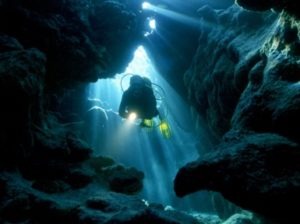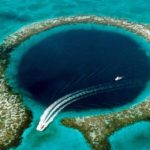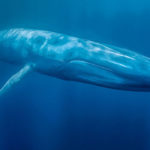Blue hole
 The Egyptian resort of Dahab became a real “Mecca” for divers when, near Dahab, an amazing place was discovered, called Blue Hole – the Blue Hole, which attracts extreme sports enthusiasts from around the world. This is truly a paradise for diving enthusiasts.
The Egyptian resort of Dahab became a real “Mecca” for divers when, near Dahab, an amazing place was discovered, called Blue Hole – the Blue Hole, which attracts extreme sports enthusiasts from around the world. This is truly a paradise for diving enthusiasts.
Blue Hole is a natural hole formed in a coral reef. The clear waters of this failure provide an opportunity for diving and freediving enthusiasts to truly enjoy the beauty of the underwater world.
The blue hole was just a real find, because Egypt is primarily famous for its pyramids, palm trees and resorts. However, in recent times, extreme forms of relaxation that can deliver as much adrenaline to the blood as possible have been gaining popularity.
Due to the fact that northern winds prevail here, in Dahab, which is a hundred kilometers from Sharm el-Sheikh along the coast of the Gulf of Aqaba, it is never hot and stuffy. In the relatively not wide, Gulf of Aqaba, there are almost never big waves, as in other resorts in Egypt.
The “Mecca” of the divers is called the Blue Hole because the sun, reflected in the water, paints the walls of the coral tunnel leading under the water in blue. This amazing creation of nature makes an irresistible impression on any person, and imagine the anticipation of a diver who has the opportunity to admire these azure reflections from the inside of the tunnel.
In the vast expanses of the oceans there are several such holes. But this one, which is located near Dahar, is of particular interest. The diameter of the Egyptian Blue Hole is a little more than 50 meters, in depth it goes more than 100 meters. Located right near the shore. Inside the crater there are two exits to the open sea: one in the form of a dense coral garden at a depth of about 7 meters, and the other, which has the shape of a huge arch, which is located at 55 meter depth. It is difficult to overestimate the attractiveness of the Blue Hole for divers, as ordinary ones who dive just like that, and for the so-called “techno drivers”, for whom diving is a way to set a personal record or win a competition. In addition, there is a separate direction – recreational divers who claim that the route inside the tunnel leading to the huge Arch, and from it to the open sea, is impossible to forget. Due to such an influx of enthusiasts, enterprising aborigines organized recreation areas and rental diving equipment.
The abundance of tourists is quite reasonable. The underwater world, especially as rich as in the Red Sea, is able to charm even an inveterate cynic. Just imagine the luminous blue of the open sea, if you look at it from the inside. On the way to the Blue Hole, tourists have to swim past a sheer wall covered with a variety of underwater plants. On the approach to the Hole the wall profile changes, it becomes more gentle and sometimes from here you can see the inhabitants of the Red Sea – barracudas and tuna. The whole journey from the start of the dive to the Hole takes about half an hour. Various representatives of the underwater world live in the Blue Hole itself, including rare ones like clown fish and triggerfish. Coral thickets are diverse and many-sided. You can see the usual corals, with processes resembling tentacles, and a huge wavy carpet of coral called Elephant Leather.
The Blue Hole Arch is legendary and huge, as techno divers say. As a matter of fact, it is the entrance to the giant tunnel, passing under the water column and having access to the reefs. Techno divers, suitably equipped and the most experienced, have the opportunity to observe fantastic streaks of light under the Gothic arch of the Arch, as well as unique animals and plants found only at such extreme depths.
It should be noted that there are several such coral “wells” in the sea. For example, they can be seen off the coast of America and the Bahamas. They are of natural origin and quite often it is discovered that there are passages between them at inconceivable depths like communicating caves. The mystery of the Blue Hole at one time was not ignored even by the most famous underwater explorer and traveler Jacques Yves Cousteau. Perhaps from here came his famous “euphoria of the abyss.” Today’s tourists descend into the depths of the coral structure, using scuba gear and accompanied by an experienced diver. Of course, before diving, each diver must be instructed and provided with valuable advice, but doing without help at first is simply dangerous.
A standard dive for tourists under the guidance of a dive guide does not usually exceed 20-30 meters. Equipment rental plus four dives cost about 120 euros per person. Since the Blue Hole is located at a distance of about 15 kilometers from the resort, you can get to it by car or bus. It is not customary to spend the night there, however there is where to relax and have a snack.



























